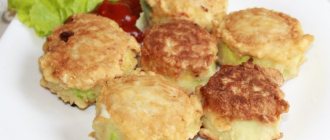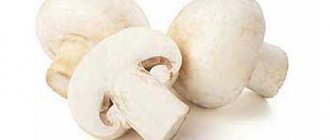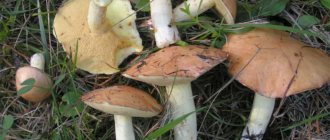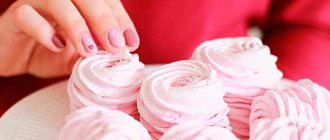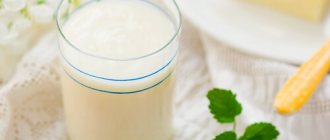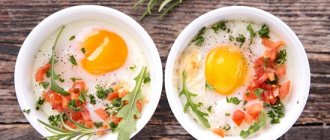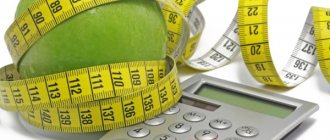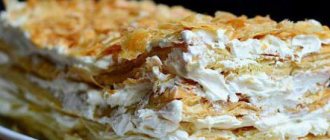Product calorie analysis
SHARE OF BZHU IN CALORIES
Ratio of proteins, fats and carbohydrates:
Knowing the contribution of proteins, fats and carbohydrates to calorie content, you can understand how well a product or diet meets the standards of a healthy diet or the requirements of a certain diet. For example, the US and Russian Departments of Health recommend 10-12% of calories come from protein, 30% from fat and 58-60% from carbohydrates. The Atkins diet recommends low carbohydrate intake, although other diets focus on low fat intake.
If more energy is expended than it is received, the body begins to use up fat reserves, and body weight decreases.
Try filling out your food diary right now without registration.
Find out your additional calorie expenditure for training and get updated recommendations absolutely free.
DATE FOR ACHIEVEMENT OF THE GOAL
Honey mushrooms
rich in vitamins and minerals such as: dietary fiber - 25.5%, vitamin B2 - 21.1%, vitamin C - 12.2%, vitamin PP - 53.5%, potassium - 16%
- Vitamin B2
is involved in redox reactions, helps to increase the color sensitivity of the visual analyzer and dark adaptation. Insufficient intake of vitamin B2 is accompanied by impaired condition of the skin, mucous membranes, and impaired light and twilight vision. - Vitamin C
is involved in redox reactions, the functioning of the immune system, and promotes the absorption of iron. Deficiency leads to loose and bleeding gums, nosebleeds due to increased permeability and fragility of blood capillaries. - Vitamin PP
is involved in redox reactions of energy metabolism. Insufficient vitamin intake is accompanied by disruption of the normal condition of the skin, gastrointestinal tract and nervous system. - Potassium
is the main intracellular ion that takes part in the regulation of water, acid and electrolyte balance, and is involved in the processes of conducting nerve impulses and regulating blood pressure.
more hide
You can look at the complete directory of the healthiest products in the appendix Nutritional value - the content of carbohydrates, fats and proteins in the product.
Nutritional value of food product
- a set of properties of a food product, in the presence of which the physiological needs of a person for the necessary substances and energy are satisfied.
Vitamins
, organic substances required in small quantities in the diet of both humans and most vertebrates. Vitamin synthesis is usually carried out by plants, not animals. A person's daily requirement for vitamins is only a few milligrams or micrograms. Unlike inorganic substances, vitamins are destroyed by strong heat. Many vitamins are unstable and are “lost” during cooking or food processing.
Honey mushrooms are one of the most popular and delicious mushrooms. They are prolific, and you can find the mushroom in the forest from late summer to late autumn. This lamellar type of mushroom has a very pleasant aroma. The structure of its pulp is quite dense, and many compare its taste to chicken meat. Therefore, it is not surprising that honey mushrooms are prepared in a variety of ways, from pickling to stewing in sour cream.
But how many calories are in honey mushrooms prepared in different ways? As you know, there are few calories in raw, boiled and dried mushrooms of different types, the average is 15-20 Kcal per 100 grams. Compared to other products, this is quite a bit. If we talk specifically about honey mushrooms, then this is 22 Kcal. But this indicator will also depend on how exactly the mushrooms are prepared. After all, during frying, quite a large amount of oil is added to them, and during marinating, sugar and other components are added.
Therefore, it is necessary to discuss in more detail what calorie content honey mushrooms have in their finished form, and whether they can be consumed during a diet.
The most delicious dishes
Mushrooms fried with sour cream and onions:
- Fresh honey fungus - 800 g.
- Onions - 4 pcs.
- Low-fat sour cream - 100 g.
- Oil for frying - 70 ml.
- Dill, salt, ground pepper.
Boil honey mushrooms for 30 minutes, drain and rinse
. Fry in a frying pan in oil, add onion and fry for another 5 minutes.
Then add the potatoes cut into cubes, add a little water and simmer under the lid until the potatoes are ready. Pour in sour cream, salt, pepper, sprinkle with dill and simmer for another 2-3 minutes.
Preparation of mushrooms and carrots:
- Honey mushrooms - 1 kg.
- Fresh carrots - 500 g.
- Onions - 300 g.
- Garlic - 3 cloves.
- Sunflower oil, salt, pepper.
Fry the grated carrots and onions in oil for 20 minutes, add the boiled mushrooms, fry for another 10 minutes. Season with salt, sprinkle with crushed garlic and ground pepper.
Place into jars and store in the refrigerator.
For longer storage, you can add a little vinegar.
Salad with pickled mushrooms:
- Marinated honey mushrooms - 200 g.
- Boiled potatoes - 3 pcs.
- Boiled egg - 4 pcs.
- Green onion, salt, pepper.
- Sour cream - 200 g.
Place all boiled and fresh ingredients on a dish in layers, brushing with sour cream.
Decorate with greens. The salad needs to sit in the refrigerator for a couple of hours to soak.
You will learn how to prepare pickled mushrooms at home from this video:
How many calories are in boiled honey mushrooms?
When mushrooms are boiled, they practically do not lose their beneficial properties, and the calorie content of the product does not change either. If you boil honey mushrooms in salted water for ten minutes, their calorie content will remain at the level of 22-24 Kcal.
- If you are dealing with wild mushrooms, you should carefully sort them out, cut off the root of each mushroom, even the smallest one, and then rinse it under running water.
- Only after this can you start cooking the mushrooms. The water in which they will be cooked should be well salted. Mushrooms should be cooked for 15-20 minutes. Then they should be thrown into a colander and rinsed well again.
- Honey mushrooms, like all other forest mushrooms, should be boiled 3 times, then washed.
These are necessary safety measures that completely exclude mushroom poisoning. Situations often arise in which even edible mushrooms cause intestinal disorders. When preparing any wild mushrooms, however, the current environmental situation should be taken into account. And mushrooms, like a sponge, absorb all the bad things from the earth. Once again, boil the mushrooms in clean water for 10 minutes - this is not such a difficult measure.
It is precisely because of the polluted environment that one should go further into the forest to collect mushrooms. It is better to stay as far away from roads and factories as possible. In addition, you need to avoid the so-called false mushrooms, which are dangerous to health. The real ones have a film ring around the stem under the cap. In false honey mushrooms it is, as a rule, barely noticeable. Real honey mushrooms have brown stems and caps. “Fakes” may have a white stem and a bright cap with uneven color.
Danger and contraindications
Despite the huge number of advantages, honey mushrooms pose a potential danger to humans. They are considered conditionally edible mushrooms, since they cannot be eaten without prior processing.
Raw mushrooms are a deadly poison for humans.
Also, the product should not be given to children under 7 years of age: their digestive tract is not able to digest and assimilate mushrooms.
Honey mushrooms are capable of absorbing, like a sponge, all harmful substances from the earth.
. It is strictly forbidden to collect mushrooms near roads, landfills, chemical plants, or in areas contaminated with radiation.
Due to the high fiber content, the product can cause indigestion and stool disorders, especially in people with gastrointestinal problems and in young children.
Potential dangers of honey mushrooms:
- Possibility of poisoning in case of incorrect choice and non-compliance with cooking rules.
- Allergic reactions. The risk group includes people suffering from food allergies, asthma, and hay fever.
- Exacerbation of ulcers or gastritis, indigestion.
- Botulism. If the technology for the production of canned mushrooms is violated, then the deadly botulism bacteria multiply in the jars. Moreover, this does not affect the appearance and taste of canned food. The disease causes paralysis; in the absence of urgent help, the patient dies within a couple of hours.
If after drinking honey mushrooms a person feels unwell, you should immediately rinse his stomach and call an ambulance.
Symptoms of mushroom poisoning:
- Vomiting, diarrhea.
- Headache.
- Hallucinations, loss of consciousness.
- Sharp pain in the abdomen.
- Temperature.
- Tachycardia or decreased heart rate.
The use of honey mushrooms is contraindicated for certain categories of people:
- Children under 7 years old.
- Those with a history of ulcers, gastritis, colitis.
- Suffering from gout.
- With impaired renal function.
- Those with allergies.
From the following video you will learn how to recognize false honey mushrooms, as well as the benefits, harms and calorie content of these mushrooms (fresh and pickled):
How many calories are in stewed honey mushrooms?
If you are interested in the question of how many calories are in honey mushrooms if they are stewed, then it is 75-80 Kcal. Braising involves pre-frying, and then the dish is simmered for some time over low heat. At the same time, the oil that the mushrooms absorbed during frying goes into the broth. Therefore, mushrooms lose calorie content.
The composition of honey mushrooms is represented by vitamins B1, B2, E, C, PP, minerals calcium, potassium, phosphorus, magnesium, sodium, iron.
The calorie content of fried honey mushrooms per 100 grams is 47 kcal. Per 100 gram serving:
- 1.93 g protein;
- 3.51 g fat;
- 3.16 g carbohydrates.
To prepare fried mushrooms you need:
- thoroughly rinse and peel 0.4 kg of raw mushrooms;
- boil honey mushrooms in salted water;
- fry the mushrooms for 10 minutes in 10 g of vegetable oil;
- add 150 g of finely chopped onions to the fried honey mushrooms. Fry mushrooms and onions until the dish is completely cooked.
How to use
Nutritionists advise including mushrooms in your diet no more than 2 times a week.
The daily intake should not exceed 200 grams of fresh and 80-100 of pickled ones, otherwise you may experience indigestion.
Before use, the product must be sorted out, washed under running water to remove dirt and dust, and the lower part of the stem removed. Heat treatment is required.
Regardless of the dish you plan to prepare, mushrooms should be boiled for 30 minutes.
Then drain the water and rinse.
If a person watches his weight and follows a diet, then it is better to eat mushrooms in salads or in combination with chicken meat. An excellent dish would be an omelette with mushrooms and tomatoes.
For those who are not losing weight, potatoes are the best accompaniment to mushrooms.
It can be boiled and served as a side dish, or it can be fried with mushrooms.
True, the calorie content of such a dish will be 200 kcal per 100 g.
You should not overuse pickled honey mushrooms due to the high content of vinegar and salt.
Salt retains fluid and causes swelling, and vinegar stimulates the appetite, so there is a risk of significantly exceeding your daily caloric intake.
Calorie content of stewed honey mushrooms per 100 grams
The calorie content of stewed honey mushrooms per 100 grams is 41 kcal. Per 100 gram serving:
- 2.13 g protein;
- 3.14 g fat;
- 2.21 g carbohydrates.
Recipe for stewed honey mushrooms:
- 1 kg of fresh honey mushrooms is thoroughly washed and boiled until ready;
- Fry 2 finely chopped onions in vegetable oil;
- mushrooms are mixed with fried onions, 1 chopped tomato, salt and pepper to taste, 2 cloves of squeezed garlic, 100 g of low-fat sour cream are added to the resulting mixture;
- the dish is simmered for 25 minutes.
Compound
Mushrooms are famous for their low calorie content and rich vitamin and mineral composition.
Nutritionists love them for this and suggest including them in the menu of those losing weight.
The calorie content of 100 g of fresh or boiled honey mushrooms is as follows:
- 22 kcal;
- 2.2 g protein;
- 1.2 g fat;
- 0.5 g carbohydrates;
- 5 g dietary fiber;
- 90 g of water.
The glycemic index of honey mushrooms is 10.
Insulin index - 30 units. For pickled mushrooms, the energy value and nutrient ratio will remain the same. However, salt and vinegar are used for the marinade, which reduces the dietary value of the product.
If vegetable oil and sugar were used for salting, then the calorie content will be 47 kcal.
The benefits of honey mushrooms
The following beneficial properties of honey mushrooms are known:
- with regular consumption of mushrooms, the fat, protein and carbohydrate balance in the body is normalized;
- honey mushrooms activate the work of the pancreas and gall bladder;
- the product has a vasodilating effect and has a beneficial effect on blood flow;
- the benefits of honey mushrooms have been proven to reduce the level of bad cholesterol and normalize blood pressure;
- B vitamins of mushrooms are necessary for the normal functioning of the nervous system and brain;
- vitamin B2 honey mushrooms improves the absorption of iron and proteins, promotes the conversion of sugar into energy, maintains eye and skin health;
- Vitamin C from mushrooms activates the body’s immune functions, has a powerful antioxidant effect, preventing the development of cancer and slowing down the aging process;
- doctors recommend including honey mushrooms in the diet to prevent stress, depression, and insomnia;
- potassium, calcium from mushrooms is necessary to maintain the functions of the heart and blood vessels,
- in folk medicine, alcoholic infusions based on honey mushrooms are used to remove warts;
- mushrooms are actively used to produce medicines for E. coli, diabetes, and laxatives.
Description
In general, the name “honey mushrooms” combines over 20 types of edible mushrooms with similar characteristics. However, among mushroom pickers it is traditionally applied to summer, autumn and winter honey mushrooms growing around stumps, which explains their name.
We suggest that you familiarize yourself with the diet for hypertension
Did you know? Honey mushroom is characterized by the same rapid growth as bamboo; for example, after rain, the mushroom can grow by 0.5 cm in just 1 minute.
Externally, this species is small in size and may vary depending on the variety:
- winter honey mushrooms have a 2–10 cm cap, the color of which can vary from light yellow to brown with an orange tint. The leg can grow up to 7 cm, has a tubular structure and is colored brown, the surface is velvety. They grow mainly on stumps and trunks of deciduous trees in the autumn-winter period;
- autumn honey fungus grows in large groups, most often found near trees such as alder, birch, and aspen, but is capable of parasitizing almost any vegetation. The mushroom bears fruit from the beginning of September until the first winter cold. A distinctive feature of representatives of this family is the large cap; it usually grows up to 15–17 cm, and the height of the fungus can reach 10 cm. The shape of the cap changes as the mushroom matures; young ones have convex caps, and more mature ones have flat ones. The color can vary from greenish to dark brown, but the leg will always be light brown;
- Summer mushrooms are most often used for pickling or pickling, due to their size. As a rule, such mushrooms grow only up to 7 cm in height, their caps are small and do not exceed 6 cm. These little ones grow in large groups, parasitizing on rotten trees and stumps. They can be collected from spring until the first November frosts. The mushroom caps have a glossy surface and can range in color from dark yellow to brown; the stem is brown.
